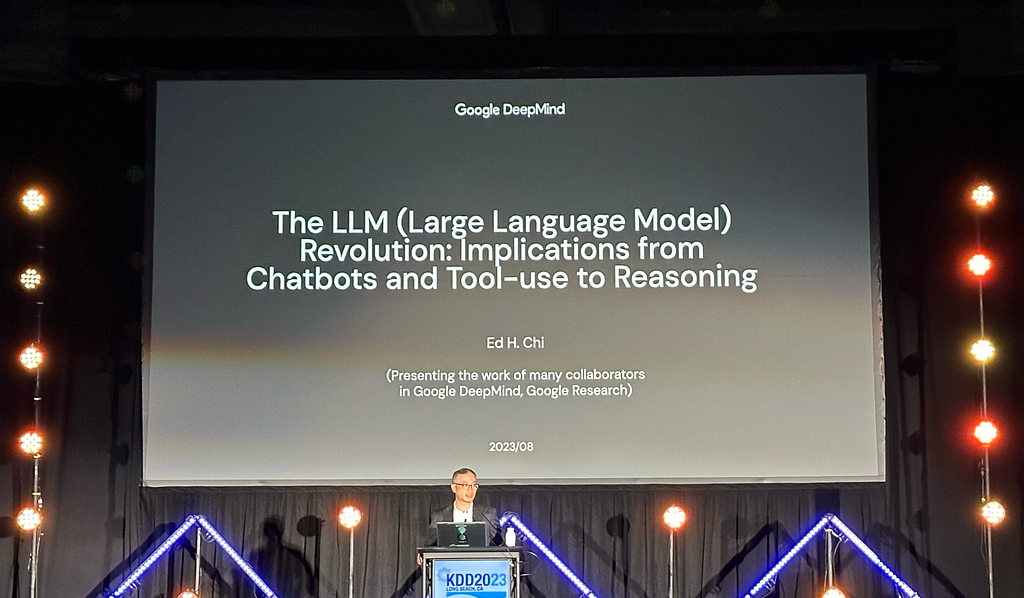The KDD conference in Long Beach, CA showcased various topics, but the highlights were Large Language Models (LLMs) and Graph Learning. The LLM Revolution keynote by Ed Chi of Google discussed the ways LLMs are bridging the gap between human intelligence and machine learning. Other presentations focused on techniques and challenges in LLM development, including reasoning, instruction fine-tuning, and language-specific models. Research papers covered topics such as query term weighting, unified retrieval models, and knowledge-grounded dialogue generation. Overall, the conference provided valuable insights into the advancements and future of LLMs.

Rephrased text:
I attended the ACM SIGKDD conference (KDD) for the first time recently and wanted to share the highlights of the event, particularly the focus on Large Language Models (LLMs) and Graph Learning. The conference covered a wide range of topics, but these were the ones that stood out to me.
One of the keynote speakers, Ed Chi from Google, discussed the LLM revolution and how it is bridging the gap between human intelligence and machine learning. He highlighted techniques such as chain-of-thought prompting, self-consistency, least-to-most prompting, and instruction fine-tuning that enable LLMs to perform reasoning tasks.
The conference dedicated a whole day to LLMs, with researchers from Microsoft, Google DeepMind, Meta, Zhipu AI, and OpenAI presenting their work on LLM technology, challenges, and future developments. They discussed topics such as LLM quality, efficient training, retrieval-augmented generation, and reasoning techniques.
There were also workshops and tutorials that delved deeper into LLMs. These covered topics like intelligent assistants leveraging LLM techniques, pre-training language representations for text understanding, and the use of LLMs in e-commerce retrieval and ranking.
Overall, the conference provided valuable insights into the latest advancements and applications of LLMs. The presentations and resources shared during the event are recommended for further exploration.
Action Items:
1. Write an article about the advancements and topics discussed at KDD 2023, with a focus on Large Language Models (LLMs). Include highlights from keynotes, talks, and workshops. (Executive Assistant)
2. Research and summarize the techniques that are making LLMs able to perform reasoning, including chain-of-thought prompting, self-consistency, least-to-most prompting, and instruction fine-tuning. (Executive Assistant)
3. Compile a list of research papers on NLP and LLMs that were presented at KDD 2023. Include a brief description of each paper. (Executive Assistant)
4. Review the slides from the tutorials on next-generation intelligent assistants leveraging LLM techniques and pretrained language representations for text understanding. Extract key insights and compile a summary. (Executive Assistant)
5. Identify the challenges ahead for LLMs, as discussed by industry experts at KDD 2023, including responsibility and safety, factuality, grounding, attribution, human-AI content loop, personalization, user memory, efficiency, extendability, flexibility, and reducing harmful, offensive, or biased content. (Executive Assistant)
List of Useful Links:
- AI Scrum Bot – ask about AI scrum and agile
- Highlights on Large Language Models at KDD 2023
- Towards Data Science – Medium
- Twitter – @itinaicom


























